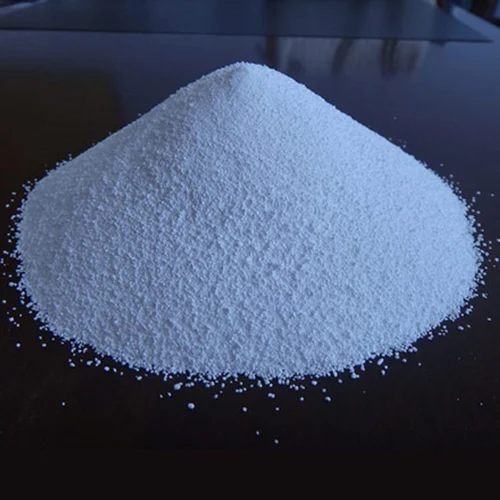

Sodium Metasilicate
50.00 - 90.00 INR/Kilograms
Product Details:
- Storage Room Temperature
- Shape Crystal
- Physical Form Solid
- Solubility Soluble in water
- Click to view more
X
Sodium Metasilicate Price And Quantity
- 500 Kilograms
- 50.00 - 90.00 INR/Kilograms
Sodium Metasilicate Product Specifications
- Soluble in water
- Room Temperature
- Solid
- Crystal
Sodium Metasilicate Trade Information
- 5000 Kilograms Per Day
- 3 Days
- Yes
- Contact us for information regarding our sample policy
- Asia Australia Central America North America South America Eastern Europe Middle East Africa Western Europe
- All India
Product Description
White powder based Sodium Metasilicate has wide application in metal surface treatment, ceramic production, refractory material manufacturing and also in various other industries. Whiteness of this chemical is more than or equal to 75. Its maximum relative density is 1.0 g/cm3. Melting point of Sodium Metasilicate is 72 degree centigrade. Offered chemical can enhance liquidity level of slurry based substances to decrease their viscosity. Standard of this chemical has been tested on the basis of its shelf life, composition, possible toxin content and chemical stability.
Sodium Metasilicate Properties:
1. Chemical Formula: Na2SiO3
2. Molecular Weight: The molecular weight of sodium metasilicate is approximately 122.06 g/mol.
3. Physical Appearance: It is commonly found as a white, granular or crystalline powder.
4. Solubility: Sodium metasilicate is soluble in water, and its solubility increases with higher temperatures.
5. pH: In solution, sodium metasilicate is alkaline and can raise the pH. It is often used as a builder or alkaline component in various cleaning products.
6. Hygroscopic: It has hygroscopic properties, meaning it can absorb and retain moisture from the air.
7. Melting Point: Sodium metasilicate typically doesn't have a distinct melting point since it tends to undergo dehydration when heated.
Applications of Sodium Metasilicate:
1. Detergents and Cleaning Products:
- Sodium metasilicate is used as a builder in laundry detergents, automatic dishwashing detergents, and industrial cleaning products.
- It helps to enhance the cleaning efficiency by preventing the re-deposition of dirt and improving the stability of the detergent formulation.
2. Metal Cleaning and Degreasing:
- It is employed in metal-cleaning formulations to remove scale, rust, and stains from metal surfaces.
- Sodium metasilicate is effective in degreasing applications, making it valuable in industrial cleaning processes.
3. Concrete and Cement Products:
- In the construction industry, sodium metasilicate is utilized as a concrete densifier to improve the hardness and durability of concrete surfaces.
- It reacts with the calcium hydroxide present in concrete to form a durable and insoluble silica gel, enhancing the properties of the concrete.
4. Adhesives:
- Sodium metasilicate can be used in certain adhesive formulations where its alkaline nature and reactivity contribute to the adhesive's properties.
5. Fireproofing:
- In some fireproofing mixtures, sodium metasilicate may be included to enhance the fire resistance of materials.
6. Textile Industry:
- Sodium metasilicate is employed in the textile industry for desizing, scouring, and bleaching processes.
7. Photography:
- It has been used in the development of photographic films and papers.
8. Water Treatment:
- In water treatment processes, sodium metasilicate may be used for controlling the corrosion of pipes and as a coagulant in wastewater treatment.
9. Ceramics and Glass Industry:
- It is used in the ceramics and glass industry as a flux to lower the melting point of raw materials during the manufacturing process.
10. Electroplating:
- Sodium metasilicate can be employed in electroplating processes to clean and prepare metal surfaces for plating.
Sodium Metasilicate FAQ:
Q. What is sodium metasilicate?
Ans: Sodium metasilicate is a chemical compound with the formula Na2SiO3. It is a white, granular or crystalline powder that is soluble in water.
Q. What are the common uses of sodium metasilicate?
Ans: Sodium metasilicate is commonly used as a builder in detergents, especially in laundry detergents and automatic dishwashing detergents. It is also used in cleaning products, metal cleaning and degreasing, concrete densification, adhesives, fireproofing, and various industrial applications.
Q. How does sodium metasilicate work in detergents?
Ans: In detergents, sodium metasilicate acts as a builder. It helps to soften water, improve the stability of the detergent formulation, and prevent the redeposition of dirt on cleaned surfaces.
Q. Is sodium metasilicate safe to use?
Ans: While sodium metasilicate is generally considered safe for its intended industrial and household uses, it can be irritating to the skin and eyes. It's important to follow safety guidelines, use protective equipment, and handle it with care.
Q. What precautions should be taken when working with sodium metasilicate?
Ans: Users should wear appropriate protective gear, including gloves and goggles, to prevent skin and eye contact. Adequate ventilation should be ensured, and contact with incompatible substances should be avoided.
Q. Can sodium metasilicate be used in water treatment?
Ans: Yes, sodium metasilicate is used in water treatment processes to control corrosion and as a coagulant in wastewater treatment.
Q. Is sodium metasilicate environmentally friendly?
Ans: Sodium metasilicate is generally considered environmentally friendly, but its impact depends on the specific application. It is biodegradable, and its use in detergents can contribute to reducing the environmental impact of cleaning products.
Q. Can sodium metasilicate be used in the food industry?
Ans: Sodium metasilicate is not generally recognized as safe (GRAS) for direct food contact. It is primarily used in industrial applications, detergents, and cleaning products.
Q. Does sodium metasilicate have any other names?
Ans: Yes, sodium metasilicate may be referred to by other names, including water glass, sodium silicate, and sodium siliconate.
Q. What is the shelf life of sodium metasilicate?
Ans: Sodium metasilicate can have a long shelf life if stored properly in a cool, dry place away from incompatible substances. It should be kept in its original container and away from moisture.
Enter Buying Requirement Details




